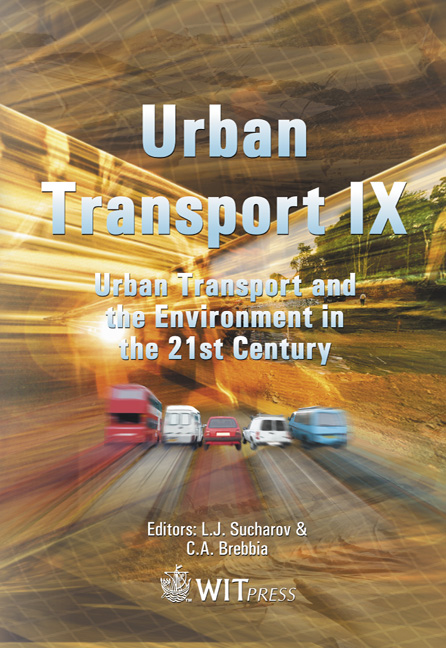The Spatial Capacity Approach For A Sustainable Urban Transport Planning. The Case Of Kallithea/Athens
Price
Free (open access)
Transaction
Volume
64
Pages
10
Published
2003
Size
588.26 kb
Paper DOI
10.2495/UT030141
Copyright
WIT Press
Author(s)
Th. Vlastos, N. Barbopoulos & D. Milakis
Abstract
PaperTitle The spatial capacity approach for a sustainable urban transport planning. The case of Kallithea/Athens PaperAbstract The "spatial capacity" approach for a sustainable urban transport planning. The case of Kallithea/ Athens Th. Vlastos, N. Barbopoulos & D. Milakis School of Surveying Engineering, Department of Geography and Regional Planning, National Technical University of Athens, Greece Abstract In this paper, a "spatial capacity" approach is proposed as a methodology for a sustainable urban planning. Kallithea, a municipality within the metropolitan area of Athens, has been chosen as a pilot area for the application of this method,. This approach is considered to better serve the philosophy of sustainable transportation . Accordingly, actual car flows should not be taken for granted. Instead, limits in car's presence should be defined. These limits refer to the "spatial capacity" concept, which expresses the necessity that limited urban road space should be distributed evenly between all users: private car, public transport, pedestrians and cyclists. It also expresses the need that cars do not exceed the aesthetic capacity of the road space and they do not affect the other users. Using this concept, the maximum acceptable cars in a certain area are calculated, and the "excessive" are pointed out. The corresponding trips will be diverted to the sustainable means of transport: public transport, cycling, walking, and collective use of the car (car pooling and car sharing). The next step is to plan an inter-operable transport system, which combines all these means, providing transportation options competitive to the private car. This system comprises of main public transport lines in exclusive lanes, local lines and transit nodes. The "excessive" car trips are distributed in it and its capacity is estimated so that it can absorb them. The necessary capacity of the main public and local transport lines is calculated, as well as the new geometry of the roads with wider sidewalks and cycle lanes.
Keywords





